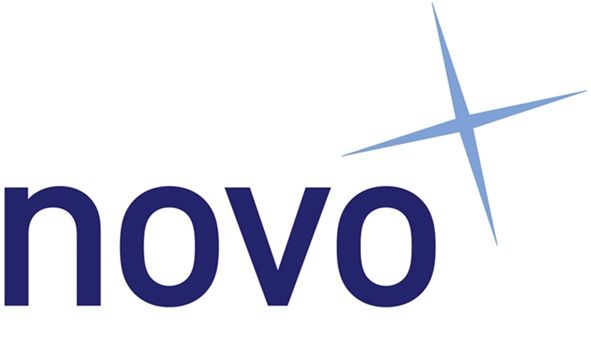When Adaptation Means Leadership: Encouraging Inclusive Thinking

Leadership shows up in the small decisions. Adjusting a meeting space so that everyone can access it without difficulty, choosing communication formats that suit different preferences, or reviewing existing processes with a wider range of needs in mind, these choices matter. Inclusive thinking isn’t limited to incorporating inclusive values into a policy. It’s demonstrated through repeated actions that support fairness, flexibility, and respect. Leaders who apply this thinking help create environments where people feel able to contribute without barriers or delay.
Adaptation, when handled with care, becomes a normal part of team culture rather than something reactive or exceptional.
Shifting Mindsets Toward Inclusive Thinking
Assumptions shape many workplace routines. These assumptions often go unchallenged until someone finds they cannot participate effectively. Shifting the mindset towards inclusive thinking starts with removing the idea that fairness means treating everyone equally.
An inclusive approach respects people’s different working styles, physical needs, and ways of accessing information. Instead of making people fit the system, leaders who incorporate inclusive thinking rework it to be more flexible.
This mindset shift affects everything from meeting scheduling to tool and equipment selection. It requires openness, consistency, and a willingness to make long-term changes, even when the existing structure seems to function well enough on the surface.
Inclusion becomes embedded rather than an afterthought when this thinking becomes part of decision-making.
Practical Adjustments That Build Belonging
Inclusive environments do not rely on individuals constantly flagging their needs. Instead, adjustments are built into the workplace’s everyday design, including physical access, communication formats, and available resources.
People are more likely to feel respected when basic tools are in place to support their movement, participation and wellbeing. Providing something as straightforward as a disability scooter for staff or visitors who need it shows a commitment to enabling access rather than reacting to a problem.
A planned approach helps. Leaders anticipating various mobility and accessibility needs can ensure options are already available. Including items like a mobility scooter in standard procurement lists reflects this preparation.
Access as a Leadership Responsibility
Inclusive leaders don’t delegate access to someone else. They ensure that workspaces, policies and processes are functional for everyone involved.
That includes removing unnecessary steps for someone to get the tools they need. When a colleague requires a product like a mobility scooter, the process for requesting or sourcing it should be straightforward. Leaders who take the time to organise resources ahead of time make these situations easier for everyone.
Practical support can include offering suppliers who have mobility scooters in stock now or ensuring that existing spaces are suitable for people using mobility equipment. This kind of preparation shows attention to detail and care in managing environments.
Leaders who maintain awareness of both physical and digital access need to reduce friction. They create workplaces where people can focus on their work rather than managing unnecessary barriers.
Building Trust Through Environmental Awareness
Trust builds slowly. It comes from repeated signals that people are seen, heard, and respected. Environmental design plays a part in this. A workplace that considers a wide range of needs strengthens that trust.
Employees notice when space planning, travel arrangements, and team activities consider accessibility. For example, reserving seats near entrances, ensuring lift access, or choosing quiet venues can reduce stress and increase comfort for some team members.
Beyond physical space, access to systems and processes also matters. When documents are compatible with screen readers or meetings, use captions as a standard, and people feel included without repeatedly asking for changes.
Consistency is key. Leaders who apply adjustments consistently demonstrate that inclusion is an organisational priority, not a personal favour.
Sustaining Inclusive Practices in Growing Teams
As teams grow, inclusive practices need to grow with them. What worked well for a smaller team often needs to be reviewed as roles and responsibilities shift. Leaders can support this by embedding accessibility into recruitment, onboarding and internal training.
Processes should evolve to make access simple. For example, a new team member should find it easy to request adaptations, such as modified equipment, flexible start times, or workspace changes. Including items like disability scooters for sale in planning documents can help procurement teams respond faster to everyday needs.
Regular reviews are helpful. By assessing how policies and practices are holding up under pressure, leaders can identify where inclusion has weakened or where it needs reinforcement.
Shared ownership helps keep the momentum. Managers across departments must be trained to recognise when adjustments are needed and how to respond effectively. This creates consistency across the organisation and helps staff feel supported at every level.
Make Inclusion a Daily Standard
Inclusive leadership is reflected in a team’s habits, not in a single announcement or workshop. It is built into how meetings are run, how tools are chosen, and how people are supported when they face a challenge.
Routine actions matter. When leaders take time to learn about barriers and act to remove them, teams become more confident, open and cohesive. A workplace that makes accessibility normal will always be more stable and more adaptable.
Ask for feedback often. Make improvements without delay. Keep access and comfort visible in every aspect of planning. And take responsibility for changes that make participation easier for everyone.
When accessibility is planned and resourced from the start, inclusion becomes a natural part of how work gets done. That kind of environment supports everyone quietly and effectively.
Originally published on People Development Magazine, https://peopledevelopmentmagazine.com/2025/06/03/inclusive-thinking/












